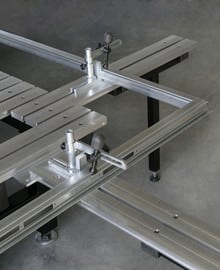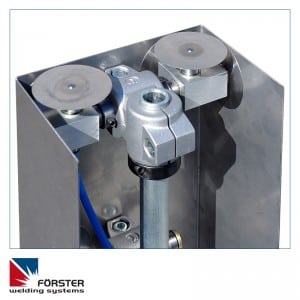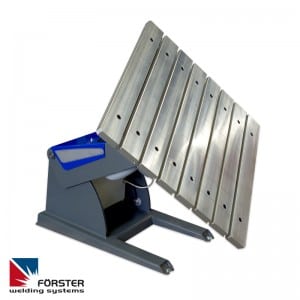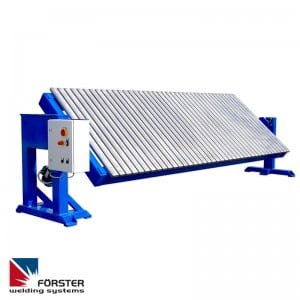The American Welding Society (AWS) has released its new version of the structural welding code for steel. Titled Structural Welding Code – Steel. AWS D1.1/D1.1m:2015, it supersedes the previous edition published in 2010.
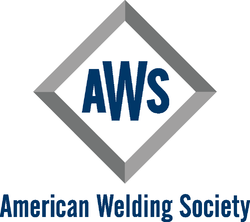 The revision represents a collaboration between the AWS D1 committee on structural welding and its sub-committee on steel, and it details all requirements for steel structures made from tube and plate. These include design and procedural requirements as well as those that relate to qualification as well as inspection and the repair of any structures manufactured using steel. It also covers structural steel shapes that will be subject to cyclic or static loading.
The revision represents a collaboration between the AWS D1 committee on structural welding and its sub-committee on steel, and it details all requirements for steel structures made from tube and plate. These include design and procedural requirements as well as those that relate to qualification as well as inspection and the repair of any structures manufactured using steel. It also covers structural steel shapes that will be subject to cyclic or static loading.
Apart from substantial changes to the text, additional commentary has been added to improve clarity in general, and to make provisions of the code easier for welders to understand.
Available from the AWS online store, the 646-page code costs $411 for members and $548 for those who are not members, and is available immediately as a PDF. Printed hardcopy versions will be ready for shipment from the end of September 2015.
The AWS lists the changes that have been made to D1.1 structural welding code in some detail.
General Changes
Parts of the revised structural welding code have been reorganized. For instance all tubular provisions, together with tables and figures, have been moved to a new section, Tubular Structures. A new section of commentary is also added here.
The AWS A5.36 code, Steel Flux Cored Electrodes for Flux Cored Arc Welding and Metal Cored Electrodes for Gas Metal Arc Welding has been incorporated as part of the structural welding code.
The section covering postweld heat treatment (PWHT), that is often used after welding to improve the weld, now has two additions: the American Society for Testing and Materials (ASTM) A709 Grade HPS (for high-performance steel) 100W [HPS 690W]. ASTM A709 100 (690) and 100W (690W) have been deleted.
Changes That Relate to Design
There are three major changes to the section relating to design:
- Calculation of the throat of a combination fillet weld and partial joint preparation (PJP) flare bevel groove weld has been clarified.
- Additional provisions have been incorporated for wrapping welds on opposite sides of a common plane so that seal welding may be permitted.
- Figures of fatigue curve cases have been revised so that they are in line with the American Institute of Steel Construction’s AISC 360.
Changes That Relate to Prequalification and Qualification
Conditions for backing metals other than steel in prequalified welding procedure specifications (WPSs) have been clarified. Requirements for “sub-sized specimens” in Charpy V-notch (CVN) tests have also been clarified.
Tables for prequalified filler metals and base metals have been updated and reorganized, and ultimately aligned with the table for prequalified preheat and interpass temperature.
There are also new figures for prequalified fillet weld joint details and complete joint penetration (CJP) groove, T-, and corner joints.
Fabrication Changes
A number of issues have been clarified in the section on fabrication, including baking requirements for the low-hydrogen electrodes that are used for ASTM A514 and A517 steels.
Preheat and interpass temperature requirements for welding with a combination of base metals have also been clarified, as have the provisions for oxygen gouging. Weld profile requirements have been clarified, and so have locations of the depth of the web from tension flanges of beams or girders. These are considered outside the tension zone for construction aid welds and for tack welds.
The requirements for backing and for cleanliness of substrates have been updated too. And revisions have been made to the location and sequence of members and element splices.
Inspection Changes
Several changes have been made in the section on inspection and there is a new table for the qualification and calibrations requirements of ultrasonic testing (U/T) equipment. Issues regarding retesting based on the quality of welding work have been clarified, and so have issues that relate to calibration for the sensitivity and horizontal sweep of U/T equipment.
Additionally, new figures have been added to the code to show more simply and clearly how to achieve effective throat for a variety of types of joint and joint combinations. Definitions and terms used in the code are now normative, and the sample welding forms provided have been revised extensively.
Lastly, the section on safe practices has been deleted and, instead, Clause 1 now includes safety references.
You can purchase the new structural code here at the AWS book store.

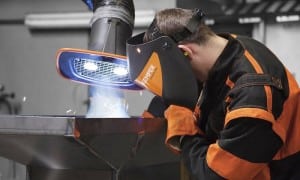 Welding emission reduction is something that interests all metal fabricators, and today’s welding technology does a good job of removing welding smoke that can contribute to health risks. This can be misleading, however.
Welding emission reduction is something that interests all metal fabricators, and today’s welding technology does a good job of removing welding smoke that can contribute to health risks. This can be misleading, however.